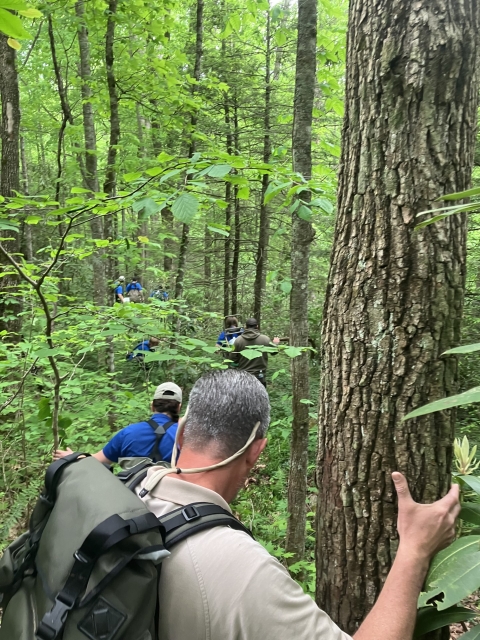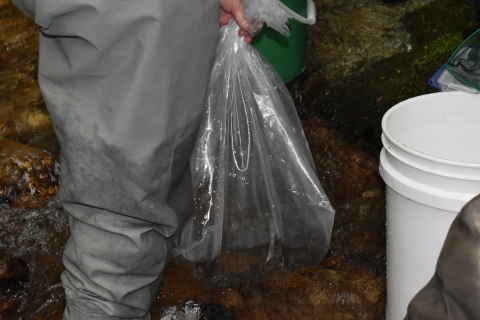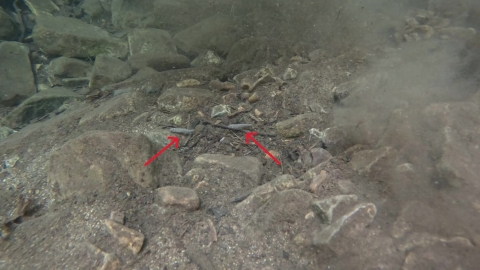On May 14th, 2024, staff from Erwin National Fish Hatchery, the Tennessee Wildlife Resources Agency (TWRA), Tennessee Aquarium, and US Forest Service met to reintroduce southern Appalachian Brook trout into the Right Prong of Rock Creek. The southern Appalachian brook trout is genetically distinct from its northern counterparts. This strain has faced historic declines due to deforestation and the introduction of non-native trout species and hatchery orgin brook trout strains.
The Tennessee Aquarium and the TWRA both operate captive propagation programs for the southern Appalachian brook trout. Trout raised at these two hatcheries are used for population reintroductions and augmentations across eastern Tennessee. Each year the TWRA will select reintroduction sites, often working with the US Forest Service to locate suitable sites on protected lands. Once selected reintroductions sites will have all non-native trout removed, and barriers are erected downstream of the sites to stop non-native fish from migrating upstream and recolonizing the site.
The first step on release day was to get the young fish to the stream. This sounds simple but in the steep and thick Appalachian Mountains few things are simple. This involved taking a hike through dense forest to over rough terrain before arriving at the creek. The fish were transported in plastic bags filled with water and oxygen. This helps to reduce stress on the fish during transport. Approximately 80 captively propagated brook trout were brought from the Tennessee Aquarium to be released at the site, and all of the trout were around 2 to 3 inches in length.
The group of biologist split into two smaller crews at the reintroduction site. One of the crews released brook trout in the lower portion of the stream, while the other crew released brook trout in the upper portion of the stream. Trout were distributed in various small pools throughout the quarter mile reintroduction site. Each pool received one to three fish depending on the size of the pool. The trout will be monitored in the coming years to assess the success of the brook trout reintroduction program.







